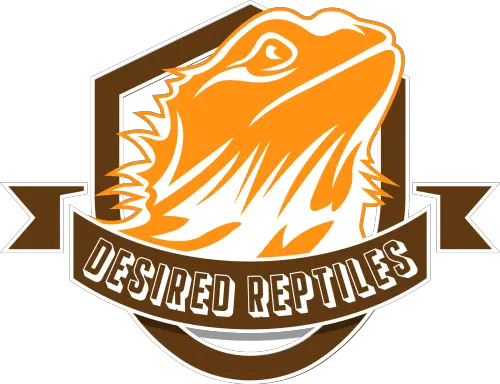Bearded dragons are usually slow and docile. Even when they’re fast, they mostly look like they’re trotting along; their little feet pitter-patter across the floor to either grab their prey or explore their environment. Are you wondering how fast your beardie can run or if it can run at all? It’s possible that it could be hiding a secret from you.
Bearded dragons can run for 7 – 9 miles per hour, and that’s even faster than some people! If you’d shrink to your dragon’s size and embark on a race with your pet, you wouldn’t stand a chance of winning. They’re also great climbers and can maintain their speed going up elevated planes and visible obstacles.
Beardies developed their running speed out of the need to get away from predators. In the wild, they are pretty targeted by larger animals, so they must escape their problems as fast as they can. Let’s take a deeper dive into bearded dragons and just how fast they run.
How Do Beardies Even Run?
If you notice your bearded dragon, it oftentimes would have its little belly dragging across the floor when it walks around. However, when there’s the need to run, your dragon will flatten its body and lift its belly off the floor. This would enable it to prance on all fours and run at unbelievable paces possibly outrunning you in the process.
Did You Know That Beardies Can Run On Two Legs? (And Wear Harnesses?)
Bearded dragons can run really fast for their size. As we’ve established, they run as fast as 7 – 9 miles per hour and even faster than some people. They would dash to confuse their predators and hunt down prey. In fact, because beardies are fond of scurrying away, there are harnesses that you can fasten to your beardie (view on Amazon) so that it doesn’t run out of sight when you’re out in the open.
Beardies can indeed run on two legs! The actual reason for this is not direct, but some believe it’s plainly to run faster, and others argue that the dragon is trying to cool off as it runs – the most speculated ideology is that it’s an intuitive action. When beardies run on all fours at such high speeds, there is a change in balance to keep them from toppling over. This brings them up on their hind legs, exactly how a human would stand, and they’d run across the setting like little people!

Why Do Bearded Dragons Run? – 5 Concrete Reasons
Beardies can run for several reasons – some good, some bad. Here are five major reasons why your beardie may see the need to run:
1. To Mate
When bearded dragons mate, it’s almost more brutal than peaceful. The male dragon expresses signs of stress and runs toward the female to assert its dominance. Wouldn’t it be flattering to run toward your date with obvious cinematic intensity? Perhaps you should give it a try.
2. To Fight
During a fight between two beardies, there’s a little runway session where the dragons will run toward themselves with fury. This is simply to look more threatening and gather a greater bite force when they attack. Perhaps they’re also letting out a war cry that we can’t hear.
3. To Catch Prey
Prey would always try their best to get away, but your beardie comes with the speed and precision it needs to fight and earn its food. It’s pretty common to see dragons run after dubia roaches when they are fed outside their enclosure. Most times, the beardie would catch the roach.
4. To Get Away From Predators
When your beardie feels threatened, it will run away from you or the situation. This is also the part where they run on their hind legs to seem to confuse the enemy, and it may work. If there was a predator at my back, I would fly if I could.
5. The Bearded Dragon Is Stressed
If a bearded dragon is thoroughly stressed, it may act on the impulse to soothe itself. This could result in a change in temperament or tolerance and a change in physical activities. Sometimes, lethargy is experienced in beardies that are stressed, and fewer times, hyperactivity. This will include surfing the glass tank (terrarium), attempting to fight reflections, spinning in circles, and dashing at full speeds for short periods.
Should I Let My Beardie Run Around? Is It Safe?
This would depend on your environment; do you have canals and sharp objects littered around the room? Then perhaps you should consider clearing that up first before you let your pet prance around. You must also be aware of other pets; cats and dogs love to either defend themselves from threats or play with smaller beings that run around. These bites or scratches may be innocent, but they could potentially harm your beardie or place it at risk of distrusting its environment.
Usually, when dragons consider an environment to be dangerous, they would vacate the area and seek safer places for them to live in. A situation where their natural instincts and habits are useless will put your dragon through immense stress. So, ensure that the area is safe and sound for your pet to walk in before taking it out of the terrarium.
Why Is My Beardie Running Away From Me?
Bearded dragons do not essentially run away from people. They prefer to express signs of aggression like blackening and puffing their beards, flattening their bodies, and opening their mouths. If your dragon is constantly taking its heels away from you, it must perceive you as extremely terrifying and would rather run away than defend itself. If this is happening, you should inspect your environment to see if there are any imitations of the predators they experience in the wild. It could be a particular wallpaper or a statue.
Also, try as much as possible to learn the correct way to handle your pet. You need patience and skill to build trust between you and your beardie so that it doesn’t perceive you to be a threat. If your dragon is still running away for dear life when you come around, you should visit a reptile specialist to assess the situation. In addition, be patient; every hurdle can be overcome with time.
